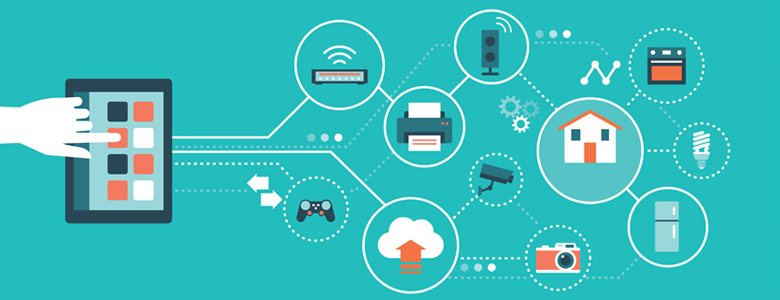
FST Media’s 2016 Future of Banking & Financial Services Event
Written for Cincom.com on December 7, 2016
The banking and financial services sector, long seen as stodgy and conservative, is experiencing disruption from multiple sources as 2016 draws to a close. Innovation and changing demographics will have profound effects upon this market now and well into the foreseeable future. Most recently, Blockchain and Artificial Intelligence (AI) have started making waves as well. These topics were the subject of much discussion and consideration during the annual gathering in Sydney, Australia of bankers and financial services providers this past November.
Customer experience and relevance remain core to the institutions’ technology initiatives. Sam McCready from BankWest tells us of the dangers of getting technology just for the sake of technology.
Human contact is still central to interactions, but only for those most important “life events”. Convenience, accessibility and immediacy all trump the “human touch” in the eyes of consumers. Consumers who are used to 24-hour online shopping, booking air travel and locating the nearest pizzeria via their smartphones will not be impressed by a facelift of their local bank’s branch office. They are more likely to expect something resembling an internet café or Apple store than a traditional bank.
It is well accepted now that customers interact across many channels, and being able to seamlessly hop from one to another is a given, albeit still a challenge in many cases. Mobile is just an enabler – a platform to deliver a strategy to the customers – not the end game, argues Sam McCready.
As of 2015, the millennials have become the largest demographic group worldwide and the number-one source of income, spending and wealth creation. The year 2015 also saw the emergence of the mobile device as the primary platform used by consumers to engage in financial services with more than 50% of the interactions with banks done through a mobile device. With those devices as their current weapon of choice, Rocky Scopelliti from Telstra shared with us that trust, relationship and technology make up the new trinity for connecting with millennials. The concept of “always on” is also demonstrated by David Boyle of NAB in their commitment to zero downtime, and the bank’s focus on customer centricity and fast response times seen with the recent launch of their new banking app.
The Commonwealth Bank of Australia has been leading the pack in terms of innovation with their banking app. The results demonstrate the impact of their efforts: Number one in customer satisfaction with 5.8 million active customers, over 1.4 million transactions per month and some 5.1 million logins per day. Peter Steel asserts that close to a quarter of their sales were across channels. Dorus van den Biezenbos, Director, Financial Services at EY, tells us that 82% of consumers first go online to do their research, but 59% will still want to talk to someone.
Security and the fight against cybercrime could be finding help with the increasing use of biometrics, such as voice biometrics. Again, the focus is on the customers’ experiences – simplifying the identification process without compromising security, especially when we consider that one in two calls to a call centre is fraudulent.
The new kids on the block, Blockchain and AI, are also receiving a great deal of attention and mindshare.
There is an evident recognition and drive towards simplification from industry players. Millennials have made it clear they find “finance” aspects too complicated and convoluted. The industry has been showing ongoing commitments to simplify products, services and processes (e.g., onboarding and claims). However, there are still challenges associated with regulatory compliance. Kevin Davis, Professor of Finance at the University of Melbourne and a Panel Member of Murray’s Financial System Inquiry, lays it out clearly. To get regulatory changes, we also need the regulator to change. Both regulators and innovators suffer from deficiencies in information.
Digital, apps and Fintech have certainly contributed to simplification, but as an emerging technology, Artificial Intelligence is clearly going to be one of the game changers. Robots and machines are increasingly part of our daily lives. Dr. Catriona Wallace, founder and CEO of Flamingo, explains the rising role of the chat bots and the difference between focused and general intelligence bots like Siri or Cortana. Conversational commerce is the new thing. Today, AI can play a significant role in dealing with the routine and allowing the freeing up of people to deal with the important things.
One equally notably change is the industry’s attitude towards Fintechs and start-ups. The last few years have demonstrated that regulations and barriers to entry cannot stop the wave of change. While the big banks have created their own innovation labs, many, along with other players, have looked for ways to engage and partner with start-ups. This should certainly assist Fintechs in taking ideas into production. However, the jury is still out as to how fruitful and successful this increase in cross-pollination will truly be, given the cultural differences amongst other hurdles. Fintechs in Australia nonetheless have a difficult and challenging environment to deal with – the lack of funding generally driving them to move overseas.
Not all of the innovation is outward-facing. Blockchain offers great utility to financial institutions that literally depend on accurately and permanently timestamping every movement of every cent throughout a 24-hour day and seven-day week.
We are certainly deep into an evolutionary period. Financial institutions, although late to the innovation party are now answering the bell. They are becoming less about finance and more about embracing a broader service experience. The drive towards mass personalisation has added a layer of complexity by overloading consumers with too many choices and options making the decision process harder and often ending in buyers’ paralysis. AI can mitigate this by empowering guided-selling technology thus simplifying complex and tedious tasks.
The opportunities are huge. Investment package evaluation, loan product comparisons, insurance option comparisons and overall financial portfolio development and other areas offer ways that complexity can be made less intimidating to the individual consumer via AI and allied technologies.


